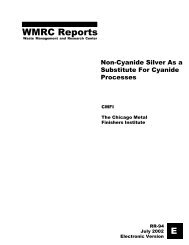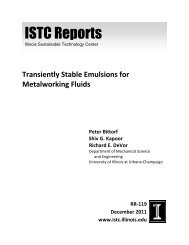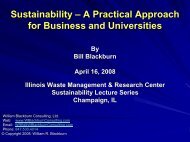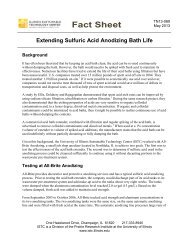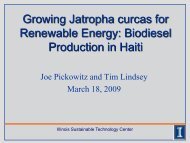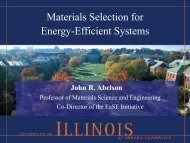Natural Resource Damage Assessment: Methods and Cases
Natural Resource Damage Assessment: Methods and Cases
Natural Resource Damage Assessment: Methods and Cases
Create successful ePaper yourself
Turn your PDF publications into a flip-book with our unique Google optimized e-Paper software.
have been provided in the absence of the injury cannot be observed, they must be estimated. One<br />
approach is to use services provided in an uncontaminated reference area to predict the services<br />
in an injured area. The other approach is to predict such services using historical information on<br />
the services in the injured area prior to the injury. It is important, however, to recognize that a<br />
‘with-<strong>and</strong>-without analysis’ is different from a ‘before-<strong>and</strong>-after’ analysis. Comparing the<br />
services provided by an aquifer before <strong>and</strong> after an injury may not be a valid method for valuing<br />
the damages due to an injury. This method does not account for changes that may have taken<br />
place to affect the quantity <strong>and</strong> quality of the resource.<br />
Once the losses of economic <strong>and</strong> ecosystem services have been quantified, the next step<br />
is to assess the value of those changes. Potential changes in services that may occur with<br />
groundwater contamination are availability of drinking water, human health risks measured by<br />
changes in mortality, morbidity, cancerous <strong>and</strong> non-cancerous health effects, costs of medical<br />
treatment, increased fear <strong>and</strong> anxiety within a community, averting or defensive expenditures to<br />
protect oneself from groundwater contamination, property value loss, ecological injury <strong>and</strong> loss<br />
of recreational use <strong>and</strong> loss in nonuse values (Abdalla, 1994). Dose-response models that link<br />
contaminant sources to changes in contaminants in groundwater <strong>and</strong> then to changes in economic<br />
<strong>and</strong> ecosystem services may be needed to estimate the damages due to groundwater<br />
contamination.<br />
The final step in the groundwater benefit estimation process is to assign monetary values<br />
to the changes in groundwater services. A number of techniques are available depending on the<br />
groundwater services that are being valued. After the economic value of groundwater to an<br />
individual is determined, the aggregate economic value is estimated by summing individual<br />
economic values over the total number of people who benefit from groundwater services. This<br />
requires determining the spatial distribution of consumers <strong>and</strong> producers who benefit from the<br />
groundwater resource. There is no consensus in the literature on how to determine market size,<br />
particularly when nonuse values are involved. Since contamination can affect groundwater<br />
services over a long time horizon, its total economic value to the current generation is the<br />
discounted sum of values in each time period over the entire time horizon required to restore<br />
groundwater quantity or quality to baseline levels. Both the length of the time horizon <strong>and</strong> the<br />
choice of discount rate can affect the estimates of groundwater values. Data regarding the<br />
quantity <strong>and</strong> quality of groundwater are imperfect <strong>and</strong> there is uncertainty about the actual<br />
changes in the current level of services projected into the future <strong>and</strong> the alternative level of<br />
services. Thus the change in service flows is an expected change <strong>and</strong> is not known with certainty.<br />
Expected changes in groundwater service flows are a function of possible alternative changes in<br />
current <strong>and</strong> future groundwater conditions <strong>and</strong> the probabilities of each of those alternatives<br />
occurring (Bergstrom et al., 1996).<br />
IV. Economic Valuation <strong>Methods</strong><br />
Many economic methods may be used to value natural resources, although some methods<br />
may be more applicable to certain resources than others. Although there may be other methods<br />
that can be applied to the task of valuing groundwater, the following list provides an introduction<br />
to some of the economic methods that can be used <strong>and</strong> the complexity involved in applying<br />
them. The following methods were chosen because most are authorized for use by the<br />
57



